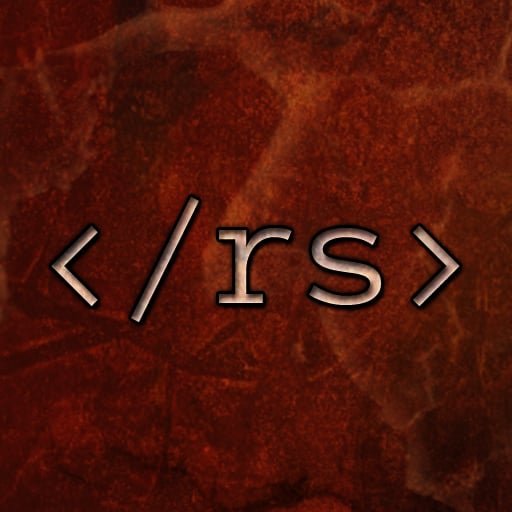Let’s get the AMAs kicked off on Lemmy, shall we.
Almost ten years ago now, I wrote RFC 7168, “Hypertext Coffeepot Control Protocol for Tea Efflux Appliances” which extends HTCPCP to handle tea brewing. Both Coffeepot Control Protocol and the tea-brewing extension are joke Internet Standards, and were released on Apr 1st (1998 and 2014). You may be familiar with HTTP error 418, “I’m a teapot”; this comes from the 1998 standard.
I’m giving a talk on the history of HTTP and HTCPCP at the WeAreDevelopers World Congress in Berlin later this month, and I need an FAQ section; AMA about the Internet and HTTP. Let’s try this out!
How do you feel about 418 being included in many legitimate http libraries?
It’s great: the Internet should have a bit of that sense of whimsy, and knowing that there’s official support in many libraries for “you’re asking me for coffee, but I’m a teapot” is one of those things that gets me through the day.
Ironically, it’s a cup of coffee that gets me through the day
I had been an advocate of getting just an ordinary person to do the first Lemmy ama but apparently we’ve got an absolute legend.
Have you ever had a favourite reference to your joke come up?
I did go to a conference once where they were handing out laptop stickers, and in the pack was a 418 teapot.
Of course, a week after I stuck that to my machine, it died. Telling the laptop it was a teapot didn’t agree with it, I guess.
I have no questions, but I want to let people here know that there are two excellent websites related to this: http.cat and http.dog, for looking up HTTP status codes.
For an example, if http.cat/418 doesn’t brighten your day, I don’t think there’s much that can.
http.cat was absolutely critical when I transitioned from general application development to web backend development. Not a joke, it was just a super readable site listing the codes with a short and memorable url.
I love this. Thank you so much.
You’re welcome! I try to share this with people whenever I can, hoping that it makes someone’s day better. It certainly gives me a lot of joy when I can respond to something with a relevant http cat, though the few people I do it to might be getting a little annoyed.
Is the internet still kept in Big Ben?
Yes, unless Jen needs to borrow it for a presentation.
I’m actually going to that conference! What’s the title of your talk? I’ll be sure to attend it!
Excellent. I’m on Stage 4 on the Thursday afternoon: “Brewing Tea Over The Internet”.
Should be fun times, see you there.
Are you by any chance, British?
Did the predilection for tea give me away?
What a British thing to ask. Very apt sir, very apt.
SYN
RST
ack :(
Congratulations on creating such a cool piece of Internet arcana!
What do you think the silliest/most useless response status code is aside from
418?Were there any codes you wish had been included that haven’t been for some reason?
I always rather enjoyed the double entendre of “420 Enhance Your Calm”, which was an unofficial response from Twitter’s original API before “429 Too Many Requests” was standardized.
But I can’t think of any codes which aren’t already in there, that I’d use; there are a bunch that don’t see much use, like “410 Gone”, so the list could do with trimming down if anything.
I need an ELI5 for this I’m a stupid Gen Z
You know sometimes you click on a link and it says “404 not found?” 404 is an HTTP status code. basically when you click on a website your browser makes an “HTTP request” to that website to get the web page, and it’ll respond with a code to tell the status. 2xx is ideal, since it means OK. 4xx means it’s an error on your end. (404, you requested a nonexistent link.) 5xx means it’s a server error.
This person made 418, a status code for “I’m a teapot”. It was intended as an april fools joke but it’s used sometimes for when the server doesn’t want to handle a request from the client.
I need one too and I’m a stupid Gen Y
As a late millennial and a programmer, I’ve got you.
So when you request a web page, before anything else, the server gives you a 3 digit status code.
100s means you asked for metadata
200s mean it went ok
300s means you need to go somewhere else (like for login, or because we moved things around)
400s mean you messed up
500s mean I messed up
So this is in the 400s. Each specific code means something - you’ve probably seen 404, which means you asked for a page that isn’t there. And maybe 405, which means you’re not allowed to see this
418 means you asked for coffee, but I’m a teapot
I can’t say enough how amazing your explanation was. Im not a programmer but I have worked on websites (self taught) and I never knew this. Thank you!
What’s your take on the fediverse frontier?
I think it’s excellent out here. I was stuck on Reddit for the longest time, and this recent debacle has pushed me to explore the networks at the edge; this feels a lot more like the Internet of old. The analogy of email is apt, I think, with the accounts on multiple servers and the interplay between.
You awaken my nostalgia, curiosity and sense of adventure when you say “explore the networks at the edge”. Are there any other networks than lemmy / mastodon that you would suggest checking out?
Internet Relay Chat’s been one of those things that’s always felt out on the edge. I’ve been on EFnet since perhaps '03, and it’s a lot quieter than it was…
With people moving en masse away from the centralized sites and their Firebase-implemented chats, we may see a pick up in traffic on the IRC networks, which would be good to see.
What are some interesting channels on EFnet? I basically grew up on Foonetic, but moved to Slashnet when #xkcd did. I don’t pay near as much attention to IRC as I used to, but would like to change that
I haven’t been exploring in the depths of EFnet in …many years. I’m confined to the programming-related channels I found in the Way Back When, nowadays: at the moment, #c is probably the most active and it’s almost all old-timers.
Are you tingly anywhere?
What was the inspiration for these internet standards?
That’s actually the topic of the talk! Around 1995-96, HTTP was picking up all kinds of use outside the academic community, and people were tacking extensions on left and right; one of the biggest was file upload support, which was done by throwing HTTP and email into a room and having them fight it out. Which is how we ended up with the monstrosity that is “sending emails over HTTP”, also known as “posting a form”.
The author of HTCPCP decided to codify some of his concerns with these, partly as a joke; I noticed long afterward that his joke was only standardized for coffee, which Personally Offended me as a citizen of a tea-drinking nation.
Do you regret adding it, or with the knowledge you have today, would you still add the 418?
Since a bunch of languages have not implemented it, or/and has long discussions about it:
https://github.com/dotnet/runtime/issues/15650
https://github.com/golang/go/issues/21326
https://github.com/nodejs/node/issues/14644
https://github.com/psf/requests/issues/4238
https://github.com/aspnet/HttpAbstractions/issues/915You’d have to catch up with Mr Masinter to get his opinion on adding error 418, I’m afraid; that piece of the business wasn’t my work.
I’m happy it’s there though: it may have sparked flamewars, but at this point what hasn’t. It does bring somewhat of that sense of humanity to the whole enterprise of working on the Internet.
I remember when I learned about this, I was working on an absurdly large project on my own. I was lost in all the details and losing hope of ever finishing. I was working on the backend API when I learned of this and took the time to implement the 418 response. It felt silly and brought the fun back to the project.
I remember when I first learned of error 418 and it did really help me understand that the Internet as we know it was made and shaped by regular people with senses of humor. Helped make it seem a bit less daunting/intimidating to understand.
It reminds me of how the Network Port 666 is specifically reserved for doom, always love Easter eggs like that in officially used protocols.
I’m just finding out about this trivia now but I’m a big fan
Sheesh, some people have no sense of humour.
Personally I don’t have any problems with it (if that was directed at me) - I’ve added 418 as “unhandled exception code” response to a bunch of applications, so I can easily differentiate whether my application is throwing an error, or whether it’s some middleware gateway AWS io-thing
I was just curious what OP thought about it, since in the early days it wasn’t uncommon to add goofs or easter-eggs into software, but nowadays not done so much… and apparently the “HTTP Working Group” doesn’t like it either… So I was curious whether OP though in hindsight whether it should’ve been added or not
How can it be unhandled? It’s right there in the song, just before the spout!
Do you think this is the dot com bubble 2.0
If anything, we’re into the “bust” part of the bubble: layoffs have been coming in waves all year, and are continuing. There were a whole bunch of posts over on Mastodon just a couple of weeks ago, at end of quarter, where people were laid off and looking for work.
What’s the process for submitting RFCs? And how do they pick which joke RFC they’ll publish? That’s a meeting I’d like to be a fly on the wall of
For “real” RFCs that aren’t Apr 1st jokes, there’s an independent submissions track for the public to write Internet-Drafts and then submit them into the review process.
With the joke RFCs, they get emailed straight to the editor at least two weeks beforehand. I’m not privy to the selection meeting, but I expect it’s fun.
I don’t have any questions but holy shit this is so cool.














